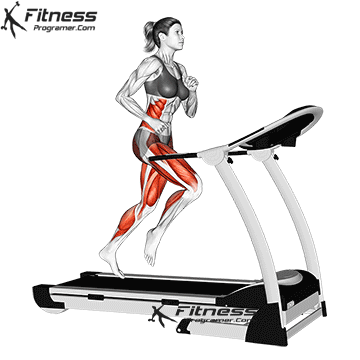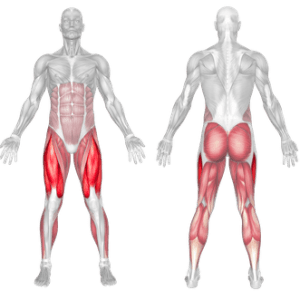Overview
The treadmill is a stationary cardio machine that simulates walking, jogging, or running. It allows users to walk, jog, or run at variable speeds and inclines. Ideal for everyone, treadmills offer benefits such as improved cardiovascular endurance, calorie burning, and support for overall heart and lung function.
How to Use a Treadmill

-
Step onto the treadmill with the belt stationary. Clip on the safety key.
-
Start with a warm-up by walking at a slow pace for 3 to 5 minutes.
-
Increase the speed to your desired pace for walking, jogging, or running.
-
Adjust the incline as needed to simulate hills and increase intensity.
-
Maintain an upright posture and swing your arms naturally.
-
Cool down by gradually reducing speed over the last 3 to 5 minutes.
Tips for Proper Form
-
Keep your head up and shoulders relaxed to maintain good posture.
-
Avoid holding onto the rails, especially during jogging or running.
-
Strike the belt midfoot and avoid overstriding.
-
Swing your arms naturally to assist with rhythm and balance.
-
Use proper footwear with cushioning and support for your gait.
Common Mistakes
-
Looking down at your feet, which can affect posture and balance.
-
Gripping the handrails tightly, reducing core and leg activation.
-
Overstriding, which increases joint impact and reduces efficiency.
-
Skipping the warm-up or cooldown, which can increase injury risk.
-
Ignoring incline options, which limits potential training adaptations.
Benefits of the Treadmill
-
Improves Cardiovascular Health: Treadmill workouts elevate heart rate, improving heart and lung efficiency.
-
Burns Calories for Fat Loss: Walking or running at moderate to high intensities helps reduce body fat.
-
Convenient and Weatherproof: Treadmills offer indoor cardio training regardless of climate conditions.
-
Customizable for All Fitness Levels: You can adjust the pace and incline to match your personal goals and ability.
-
Low-Impact Options Available: Walking on a treadmill is gentler on joints than running outdoors on pavement.
-
Builds Lower Body Endurance: Regular treadmill use strengthens the calves, hamstrings, glutes, and quads.
-
Tracks Progress Easily: Most machines include metrics like speed, time, distance, heart rate, and calories burned.
How to Incorporate Into Your Routine
- For Beginners: Start with 2 to 3 sessions per week of 20 to 30 minutes of walking or light jogging.
- For Fat Loss: Use interval walking or incline walking for 30 to 45 minutes, 3 to 5 times weekly.
- For Endurance Training: Run at a steady pace for 45 to 60 minutes, focusing on maintaining heart rate in Zone 2 or 3.
- For Strength and Conditioning: Perform hill sprints or incline intervals 2 to 3 times weekly for lower body endurance.
- For Functional Fitness: Combine short treadmill intervals with bodyweight exercises in a circuit format.
- For General Fitness: Walk briskly for 30 minutes daily or after strength training sessions as a cooldown.
- For Mobility and Recovery: Use walking sessions at a slow pace and low incline to promote blood flow on rest days.
Treadmill Muscles Worked

Frequently Asked Questions
Is treadmill running as effective as outdoor running?
Yes, especially for consistency and reduced joint impact. You can simulate outdoor resistance using incline settings.
How often should I use the treadmill?
Three to five times per week is ideal, depending on your goals, schedule, and overall training routine.
What is a good speed for fat burning?
Moderate walking at 3 to 4 mph on an incline or light jogging at 5 to 6 mph promotes fat oxidation.
Can I use the treadmill for HIIT workouts?
Yes. Alternate between short, fast sprints and walking recovery periods for an effective HIIT session.
